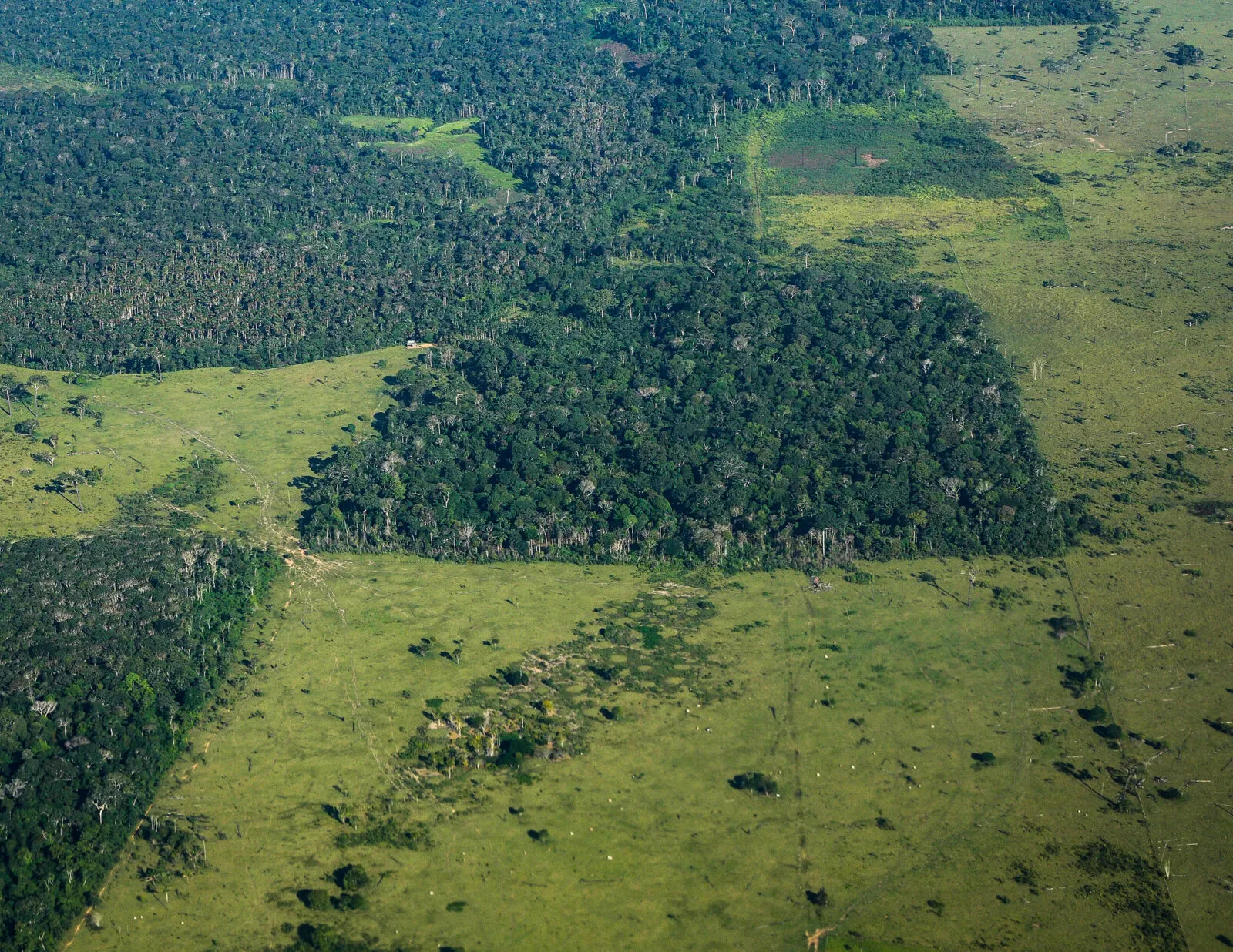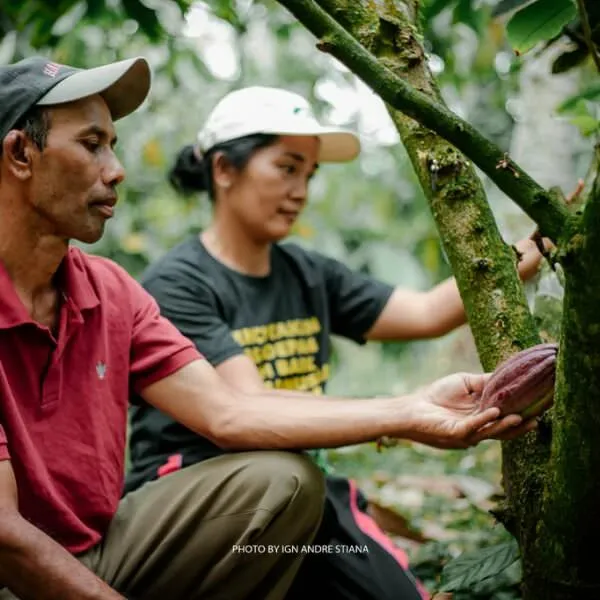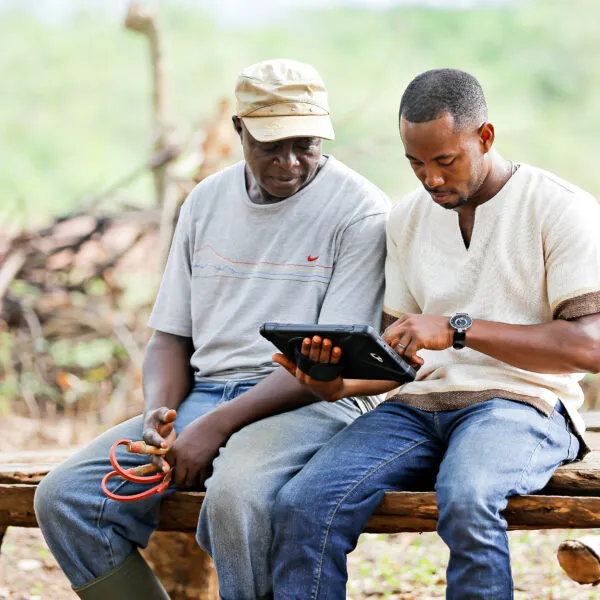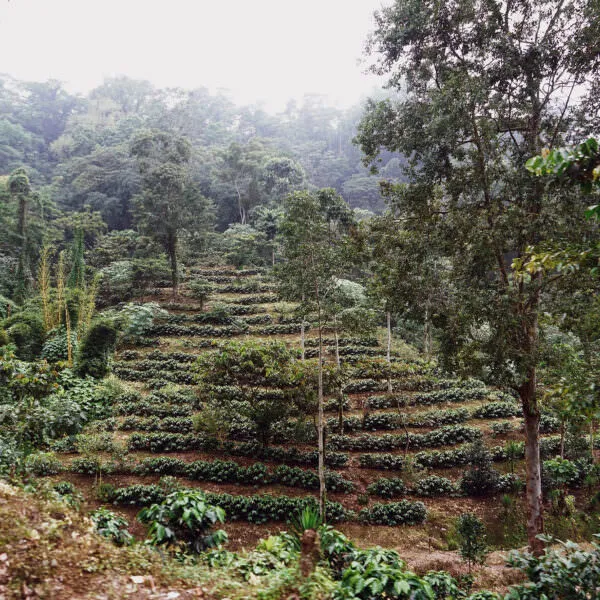You can’t solve a problem that you don’t understand. Everyone knows, for instance, that “deforestation” and “forest degradation” present massive threats to people and nature, but what exactly do these terms mean? And why do they matter?
First, we must establish what constitutes a forest. Are we talking only about untouched forests filled with native tree species? What about agroforestry systems, like shaded Rainforest Alliance Certified coffee farms, which have a significant amount of tree cover? Do tree plantations count? To explain the different concepts, we turned to Emmanuelle Bérenger, the forest lead for the Rainforest Alliance’s global programs.
Forest
The United Nations Food and Agriculture Organization (FAO) defines a forest as “land spanning more than 0.5 hectares with trees taller than 5 meters and a canopy cover of more than 10 percent, or trees able to reach these thresholds in situ.” Notably, the FAO’s definition includes both natural forests and plantation forests.
Deforestation
The most commonly accepted global definition of deforestation also comes from the FAO: the conversion of forest to other land use, whether this conversion is human-induced or not. But for the Rainforest Alliance, deforestation also includes turning natural forests into tree plantations. We view the result of severe and sustained degradation as deforestation, too.
Forest degradation
Until 2015, the FAO defined forest degradation as forest ecosystems that have lost their capacity to provide important goods and services to people (like watershed protection) and nature (like wildlife habitat). Since 2020, however, each country gets to decide what a degraded forest means within its own landscapes, and this is where things get complicated.
Defining forest degradation is tough because it’s incremental and can remain invisible for a long time—as when illegal hunting empties a forest of its wildlife. “Like us, forests can be sick and unhealthy, or thriving and productive,” Bérenger said. “Forest quality matters as much as quantity.”
How deforestation and forest degradation are measured
Thanks to satellite imagery, it’s relatively easy to assess deforestation in a particular area, by comparing current images of a location to those snapped at an earlier date. Forest degradation—which can include loss of carbon storage and soil stability—is much harder to assess, monitor, and regulate. “Forests are more than just trees. If there are roads, if forest patches are not connected, that can have a large impact on biodiversity and the way an ecosystem functions.” Therefore, Bérenger said, many factors must be considered.
Why forest degradation matters
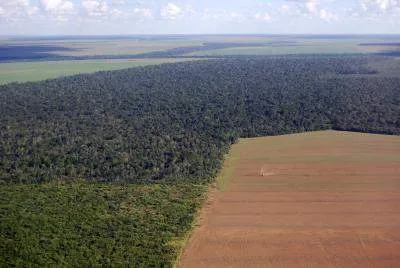
Here’s one stark example of why it matters: “Over the past 10 years, research in the Brazilian Amazon has shown that forest degradation—caused by forest fragmentation, unsustainable forestry, and fires that damaged trees—generated three times more carbon emissions than deforestation,” Bérenger said.
If you compare two similarly sized tracts of forests, the deforested tract will generate more emissions than the degraded one. But forest degradation tends to occur on a much larger scale.
The human element
A quarter of the world’s forests are managed by people who rely on their natural resources to survive. Both deforestation and forest degradation can take a terrible toll on these communities.
That’s why the Rainforest Alliance has long collaborated with rural communities to build businesses that allow them to make a living from the forest while protecting it. The community-run concessions we partner with in Guatemala’s Maya Biosphere Reserve have done an even better job of keeping their forests healthy and intact than neighboring areas zoned for strict protection.
Europe’s pioneering new law
The Rainforest Alliance partners with farm and forest communities all over the world to protect forests. As consumers we can all do our part by buying foods, beverages, and timber items that are certified, either by the Rainforest Alliance or the Forest Stewardship Council (FSC).
But arguably, it’s companies that have the most power—and responsibility—to protect forests. The European Union is now putting the onus on big business with a new law that forces companies to eliminate deforestation and forest degradation from their supply chains.
Set to take effect in December 2025, the EU’s regulation on deforestation-free products (known as the EUDR) states that companies can only sell products in the EU, or export products made there, if they are deforestation-free and have been legally produced. The new law applies to wood, palm oil, soy, coffee, cocoa, rubber, and beef as well as most of the goods derived from these commodities. Thanks to the lobbying efforts of a coalition of NGOs, including the Rainforest Alliance, the EUDR addresses the impacts of forest degradation as well—specifically, the conversion of natural forests to tree plantations, or into a bush-type forest. The law prohibits the sale of any products originating in forests that have been transformed into plantations after December 31st, 2020.
The path forward
Until now, the terms severe forest degradation and deforestation have been used interchangeably, Bérenger said, but the EUDR represents the first time that an actionable definition of degradation has been sought and applied—and tied to a corresponding sanction. This landmark law paves the way for more clarity and action on forest degradation.
Ultimately, the key to keeping forests healthy and thriving lies in exactly the kind of work the Rainforest Alliance has been doing for decades. (In fact, the requirements of the EUDR closely align with the requirements of our certification program.) With more governments and companies getting on board with our vision, we’re even better equipped to create a world where people and nature thrive in harmony.
